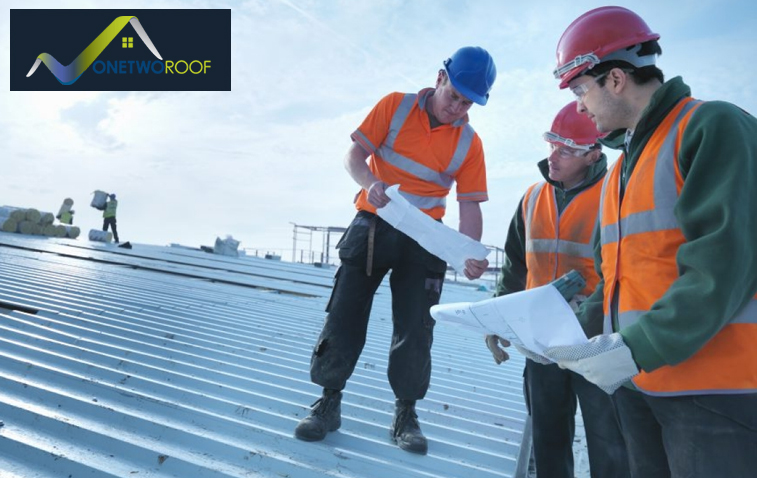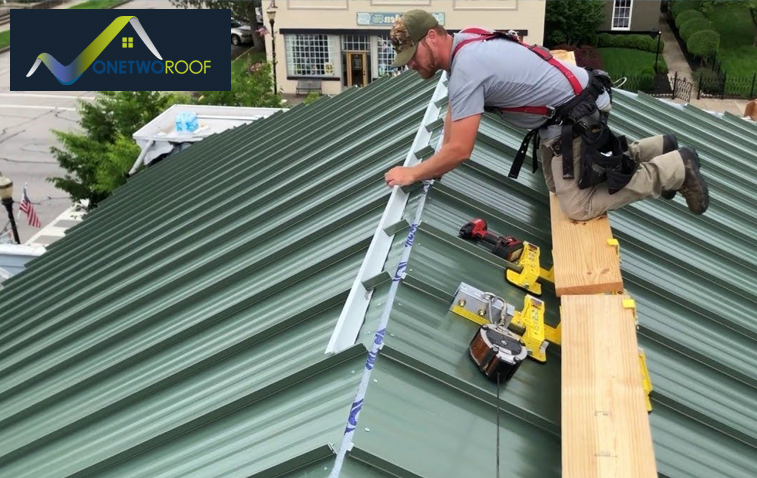The Role of Roofing in Energy Efficiency: How Your Roof Can Save You Money
Your roof plays a crucial role in the overall energy efficiency of your home. While it’s easy to think of a roof as merely a protective barrier against the elements, its impact on your energy consumption and utility bills can be significant. Energy-efficient roofing not only enhances the thermal performance of your home but also helps regulate its temperature, reducing the strain on your heating and cooling systems. This, in turn, can lead to substantial savings on your energy bills. As energy costs continue to rise and environmental concerns become more pressing, understanding how energy-efficient roofing influences your home’s energy efficiency is more important than ever.
From material choices to design considerations, several factors contribute to how well your roof conserves energy. Innovations in roofing technology have introduced materials and techniques that enhance a roof’s ability to reflect heat, insulate against cold, and even generate renewable energy. By exploring these elements, you can make informed decisions about your roofing options and maximize your home’s energy efficiency. Here’s a deep dive into how your roof can save you money by improving energy efficiency, and the key aspects to consider when evaluating your roofing system.

The Importance of Roofing Materials
The material your roof is made from plays a fundamental role in determining its energy efficiency. Different materials have varying abilities to reflect or absorb heat, affecting how much your home heats up or cools down.
Reflective Roofing Materials
Reflective roofing materials, also known as cool roofing materials, are designed to reflect more sunlight and absorb less heat than standard roofing materials. These materials can help reduce the amount of heat that enters your home, particularly in hot climates. Common reflective roofing materials include:
- Metal Roofing: Metal roofs are naturally reflective and can be coated with special finishes to enhance their ability to reflect solar radiation.
- Cool Asphalt Shingles: These shingles are treated with reflective granules that help reduce heat absorption, making them more energy-efficient than traditional asphalt shingles.
- Tile Roofing: Clay and concrete tiles can be manufactured with reflective coatings to reduce heat absorption, making them a good option for energy-conscious homeowners.
Insulating Roofing Materials
In colder climates, insulating roofing materials can help keep heat inside your home, reducing the need for additional heating. Insulating materials include:
- Foam Insulation: Foam insulation can be applied directly to the underside of the roof deck, providing excellent thermal resistance and reducing heat loss.
- Fiberglass Insulation: Commonly used in attics, fiberglass insulation helps prevent heat from escaping through the roof, keeping your home warmer in the winter.
- Insulated Metal Panels: These panels combine the durability of metal roofing with built-in insulation, offering both energy efficiency and structural strength.
Green Roofing Materials
Green roofs, or living roofs, are another energy-efficient option that involves covering the roof with vegetation. Green roofs provide natural insulation, reduce heat absorption, and help manage stormwater runoff. They are particularly effective in urban areas, where they can also reduce the urban heat island effect.
The Role of Roof Color
The color of your roof can have a significant impact on your home’s energy efficiency. Lighter-colored roofs reflect more sunlight, while darker-colored roofs absorb more heat.
Light-Colored Roofs
Light-colored roofs, such as white or light gray, are highly reflective and can help reduce the amount of heat absorbed by your home. This makes them ideal for hot climates, where keeping the interior cool is a priority. A lighter-colored roof can reduce the temperature of the roof surface by as much as 50 to 60 degrees Fahrenheit, which in turn lowers the temperature inside the home.
Dark-Colored Roofs
Dark-colored roofs, such as black or dark brown, absorb more heat, which can be beneficial in colder climates. The heat absorption helps keep the home warmer during the winter months, reducing the need for additional heating. However, in warmer climates, dark-colored roofs can lead to higher cooling costs.
Reflective Coatings
Regardless of color, reflective coatings can be applied to roofing materials to enhance their energy efficiency. These coatings increase the reflectivity of the roof, reducing heat absorption and improving overall energy performance.
Proper Roof Ventilation
Proper roof ventilation is essential for maintaining energy efficiency. Without adequate ventilation, heat and moisture can build up in the attic, leading to increased energy costs and potential damage to the roofing system.
Attic Ventilation
Attic ventilation helps regulate the temperature inside the attic, preventing heat from building up during the summer and reducing moisture levels during the winter. Effective attic ventilation systems typically include a combination of intake vents (such as soffit vents) and exhaust vents (such as ridge vents or gable vents).
Benefits of Proper Ventilation
- Temperature Regulation: Ventilation helps keep the attic cooler in the summer, reducing the strain on your air conditioning system.
- Moisture Control: Proper ventilation reduces the risk of moisture buildup, which can lead to mold growth and damage to the roof deck.
- Extended Roof Lifespan: By preventing excessive heat and moisture buildup, proper ventilation can extend the lifespan of your roofing materials.
Signs of Poor Ventilation
Signs of poor roof ventilation include:
- Hot Attic: An excessively hot attic during the summer is a sign that ventilation is insufficient.
- Ice Dams: In colder climates, ice dams along the roof edge can indicate poor ventilation and insulation.
- Mold or Mildew: The presence of mold or mildew in the attic suggests high moisture levels due to inadequate ventilation.

Insulation and Energy Efficiency
Insulation works hand-in-hand with roofing to improve a home’s energy efficiency. While insulation is typically associated with walls and attics, the roof itself can benefit from proper insulation techniques.
Roof Insulation Types
Several types of insulation can be used in conjunction with roofing to enhance energy efficiency:
- Blown-In Insulation: This type of insulation is often used in attics and can be blown into hard-to-reach areas to create a continuous thermal barrier.
- Spray Foam Insulation: Spray foam provides excellent thermal resistance and can be applied directly to the underside of the roof deck. It also acts as an air barrier, reducing drafts and heat loss.
- Rigid Foam Insulation: Rigid foam boards can be installed under the roof deck or on the exterior of the roof to provide continuous insulation.
Benefits of Roof Insulation
- Energy Savings: Proper roof insulation reduces heat transfer, lowering heating and cooling costs.
- Comfort: Insulation helps maintain a consistent indoor temperature, improving comfort year-round.
- Noise Reduction: Insulation can also reduce external noise, making the home quieter.
Insulation R-Value
The effectiveness of insulation is measured by its R-value, which indicates its resistance to heat flow. The higher the R-value, the better the insulation’s performance. It’s important to choose the appropriate R-value based on your climate and the specific needs of your home.
Impact of Roofing Design on Energy Efficiency
The design of your roof, including its shape, pitch, and overhangs, can influence energy efficiency.
Roof Shape and Pitch
The shape and pitch of your roof can affect how heat is absorbed or reflected. For example:
- Flat Roofs: Flat roofs tend to absorb more heat, making them less energy-efficient in hot climates. However, they are well-suited for installing green roofs or solar panels.
- Gable Roofs: Gable roofs, with their steep pitch, allow for better air circulation and can reduce heat buildup in the attic.
- Hip Roofs: Hip roofs, with slopes on all sides, offer good resistance to wind and can be designed to promote better ventilation.
Overhangs and Shading
Roof overhangs can provide natural shading for windows and walls, reducing heat gain during the summer. By blocking direct sunlight, overhangs help keep the interior cooler and reduce the need for air conditioning.
Skylights and Energy Efficiency
While skylights can add natural light to your home, they can also contribute to heat gain if not properly installed. Energy-efficient skylights with low-emissivity (low-E) glass can help minimize heat transfer, while skylight shades or covers can provide additional insulation.
The Role of Roofing in Passive Solar Design
Passive solar design is an approach that uses the sun’s energy to heat and cool a home naturally. The roof plays a critical role in passive solar design by controlling how much sunlight enters the home.
Solar Orientation
The orientation of your roof relative to the sun can impact energy efficiency. For instance, a south-facing roof in the northern hemisphere receives the most sunlight, making it ideal for solar panels or passive solar heating.
Thermal Mass
Thermal mass refers to materials that absorb and store heat during the day and release it at night. Roofing materials with high thermal mass, such as concrete or tile, can help regulate indoor temperatures in passive solar design.
Reflective and Absorptive Surfaces
In passive solar design, the balance between reflective and absorptive surfaces is crucial. A roof with reflective materials can reduce heat gain during the summer, while surfaces that absorb heat can help warm the home during the winter.
Solar Roofing Solutions
Solar roofing solutions, such as solar panels and solar shingles, are an excellent way to enhance your roof’s energy efficiency and generate renewable energy.
Solar Panels
Traditional solar panels are installed on top of the roof and are designed to convert sunlight into electricity. Solar panels are most effective when installed on roofs with a southern exposure and minimal shading.
Solar Shingles
Solar shingles are a newer technology that integrates photovoltaic cells into the roofing material itself. These shingles blend seamlessly with traditional roofing materials, offering a more aesthetically pleasing alternative to traditional solar panels.
Benefits of Solar Roofing
- Energy Production: Solar roofing systems generate electricity, reducing reliance on grid power and lowering utility bills.
- Environmental Impact: By producing clean, renewable energy, solar roofing systems help reduce greenhouse gas emissions.
- Increased Home Value: Homes with solar roofing systems often have higher resale values due to their energy efficiency and sustainability features.

The Impact of Roof Maintenance on Energy Efficiency
Regular roof maintenance is essential for ensuring that your roof remains energy-efficient over time. Neglecting maintenance can lead to issues that compromise the roof’s ability to regulate temperature and protect your home.
Regular Inspections
Conduct regular roof inspections to identify and address any issues that could affect energy efficiency. Look for signs of damage, such as missing or damaged shingles, leaks, or areas of the roof that are sagging.
Gutter Maintenance
Clogged gutters can lead to water buildup on the roof, which can damage roofing materials and reduce insulation effectiveness. Regularly clean gutters and downspouts to ensure proper drainage and prevent water damage.
Addressing Repairs Promptly
Promptly address any repairs that are needed to maintain the roof’s integrity. Ignoring small issues can lead to more significant problems that compromise energy efficiency and increase repair costs.
The Future of Energy-Efficient Roofing
As technology continues to advance, the future of energy-efficient roofing looks promising. Innovations in materials, design, and renewable energy integration will further enhance the role of roofing in energy efficiency.
Smart Roofing Systems
Smart roofing systems equipped with sensors and monitoring technology will provide real-time data on roof performance, allowing homeowners to optimize energy efficiency and address issues before they become serious.
Advanced Insulation Techniques
Advances in insulation techniques, such as aerogel and phase-change materials, will improve the thermal performance of roofs, reducing heat transfer and energy consumption.
Integration with Smart Homes
Roofing systems will increasingly integrate with smart home technology, allowing homeowners to control and monitor their roofs remotely. This integration will enable more precise management of energy usage and roof maintenance.
FAQs
How can the color of my roof affect my home’s energy efficiency?
The color of your roof plays a significant role in energy efficiency. Light-colored roofs reflect more sunlight, keeping your home cooler in warm climates, while dark-colored roofs absorb heat, which can be beneficial in colder climates.
What are the benefits of a green roof?
Green roofs provide natural insulation, reduce heat absorption, and manage stormwater runoff. They also enhance urban biodiversity and contribute to a cooler, more sustainable environment, especially in urban settings.
How does roof ventilation contribute to energy efficiency?
Proper roof ventilation helps regulate attic temperature, reducing heat buildup in the summer and moisture levels in the winter. This ventilation extends the lifespan of your roofing materials and reduces the strain on your heating and cooling systems.
What is the role of insulation in roofing?
Roof insulation reduces heat transfer between your home and the outside environment. It helps maintain a consistent indoor temperature, reduces energy consumption, and increases comfort, especially in extreme weather conditions.
Your roof is more than just a protective barrier; it’s a critical component of your home’s energy efficiency. By choosing the right materials, colors, and designs, and by ensuring proper maintenance, you can significantly reduce your energy consumption and save money on utility bills. As roofing technology continues to evolve, the potential for energy savings and environmental benefits will only increase, making energy-efficient roofing a smart investment for any homeowner.
